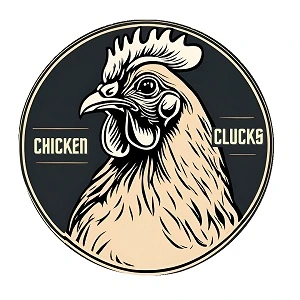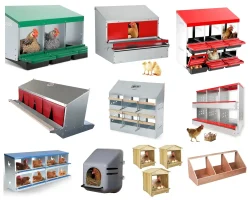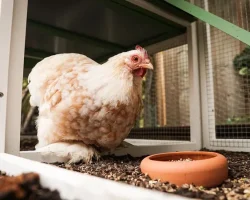The term “chicken run” might bring to mind a quirky animated movie or an image of your chickens plotting their escape.
But in the context of backyard chicken keeping, a chicken run is simply a fenced-in area where your cluckers can roam safely.
And believe it or not, despite what the name implies, a well-designed chicken run can actually prevent your chickens from escaping.
No Chicken Run, No Clucking Fun
Sure, a cute little coop in a small corner is what most backyard chicken keepers envision. But chickens need more than just a cozy home. They need to spread their wings and get exercise.
Without a dedicated space where they can roam freely and safely, your chickens will be stuck cooped up, with no room to scratch, peck, or explore. This lack of activity can quickly lead to boredom, turning them into frustrated little troublemakers who will keep trying to escape the yard.
But letting them roam freely isn’t the solution either. Free-ranging chickens can not only damage your cherished vegetable garden, but they could also wander into neighboring properties, causing frustration. Even more importantly, your chickens will be exposed to predators without any protection.
That’s where a chicken run offers the perfect middle ground.
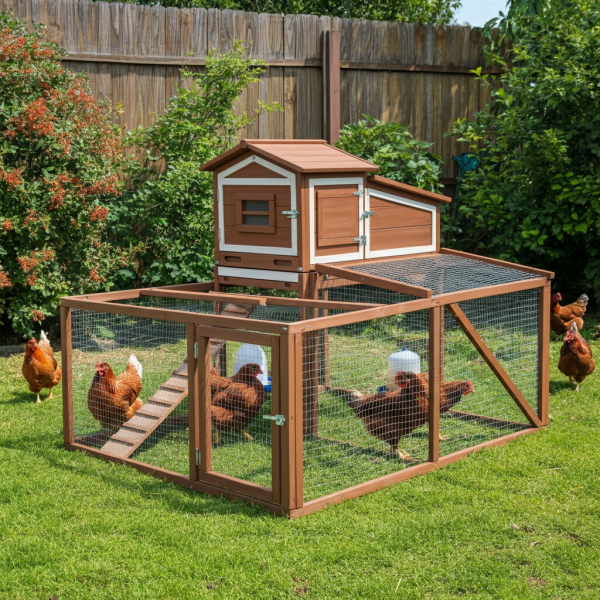
A well-built chicken run not only improves the health and productivity of your flock, but also offers a safe haven from predators and elements.
Plus, it’s also a practical way to keep your flock safely contained while allowing them to roam around and stretch their wings.
Sizing Up Your Chicken Run
The general rule of thumb is to allow at least 10-12 square feet (0.9–1.1 m²) per chicken in the run.
But more space is always better, especially if your chickens will spend a lot of time in the run rather than free-ranging.
Just keep in mind that larger chicken runs can also mean more cleaning and maintenance, so it’s important to not go overboard.
In addition to floor space, chickens also appreciate vertical room. So if you can, add a little extra height to your run. This will allow your chickens to spread their wings fully and climb up to higher areas to perch and hop.
Speaking of convenience, a taller run will also be way easier on your own back. You can easily walk in to refill food and water, collect eggs, and tidy up without having to arch or bend over.
Keeping Your Chicken Run Safe & Sound
Chickens might rule the roost, but out in the wild, they’re pretty far down the food chain. That’s why they’re naturally vulnerable to a variety of threats.
A well-designed chicken run should be your flock’s first line of defence against predators, as well as the elements.

Predator-Proofing
- Fencing: Use fox-proof wire or heavy-duty mesh instead of standard chicken wire. Make sure it’s at least 6 feet (1.8 meters) tall to block climbing predators like raccoons, and bury it at least 12 inches (0.3 meters) deep to stop digging predators from tunneling under.
- Covering: Install bird netting or strong wire mesh over the top of the run to keep your chickens safe from aerial predators such as hawks and owls. This also prevents clever climbers like raccoons and foxes from getting in, and your chickens from unexpectedly flying out!
- Secured Openings: Ensure that vents, windows, or any openings in your run are covered with durable hardware cloth. Use a smaller mesh size of 0.5 inches to prevent small predators from sneaking in through the gaps.
- Motion Sensors: Deter nocturnal predators, like foxes or coyotes, using motion-activated alarms or lights. You can also use a night vision smart camera with motion detection built in for real-time monitoring.
- Electric Fencing: For added security, especially against larger predators, you can also consider using low-voltage electric fencing around the perimeter of the run. Just be aware that electric fencing requires regular upkeep. The power should be on 24/7 for optimal protection, and you’ll need to regularly ensure that it’s working using a tester. Also, keep the grass and weeds trimmed around the fence line.
Protecting Against the Elements
- Shade and Shelter: Install a sturdy roof or tarp to provide shelter from rain, snow, and intense sun. Use weather-resistant materials like polycarbonate or galvanized metal for long-lasting protection.
- Windbreaks and Insulation: Use solid fencing or thick tarps around the chicken run to block cold, biting winds. You can also add insulated panels or straw bales along the walls to keep the internal temperature more stable.
- Proper Ventilation: Ensure airflow by installing adjustable vents high up on the run to prevent excess moisture and heat build-up, while protecting chickens from cold drafts and respiratory issues.
- Heat Protection: In hot weather, use light-colored, reflective materials on the roof or sides of your chicken run to reflect the sun and reduce heat buildup inside the run.
- Elevated Floor: Raise the chicken run floor by a few inches using gravel, large stones, or paving slabs, to prevent water from pooling and making a soggy mess during heavy rains.
Escape-Proofing
- Secure the Exits: Use heavy-duty latches, like slide bolts or spring-loaded locks, that cannot be easily opened by curious chickens.
- Reinforcement: Consider reinforcing your run with solid panels (wood or metal) along the sides. This prevents chickens from squeezing through any gaps in the wire fencing.
- Prevent Climbing: Add smooth metal panels or plastic on the inside of the chicken run to discourage climbing. Make sure the sides of the run are also smooth and difficult for your chickens to grip.
- Double Fencing: Install a secondary barrier just outside the main chicken run. If you have particularly adventurous chickens, this makes it harder for them to find their way out.
- Regular Inspection: Regularly inspect the entire structure. Ensure there are no loose wires or spaces around corners, doors, and posts. You can also install surveillance cameras to alert you in real-time.
Different Types of Chicken Runs
Like most backyard chicken setups, you can keep your chicken run simple and DIY using just a basic fence.
However, investing in a more specialized run can offer superior predator protection and easier maintenance. This saves you time and reduces stress for you as a chicken keeper.
Walk-In Chicken Runs
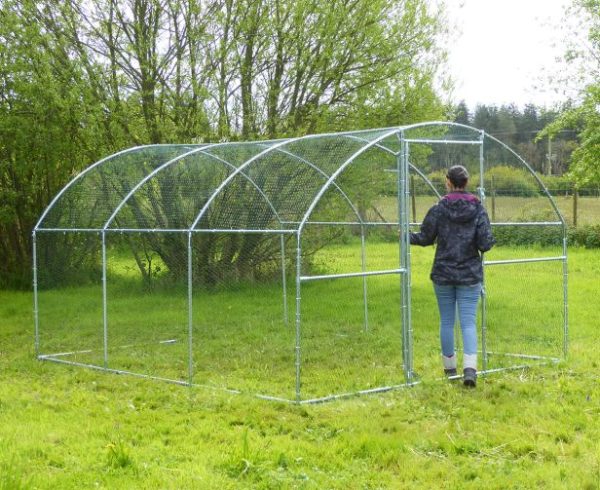
These walk-in chicken runs are spacious enough for you to enter, walk around, and even stand up comfortably.
It’s the ideal choice if you plan on spending a lot of time in the run, whether it’s to clean, feed, or just hang out with your chickens.
- Pros: Easy maintenance, more space for chickens to roam, can include taller structures for chickens to climb and perch on.
- Cons: Requires a decent amount of space, higher upfront construction cost.
The run in the picture is the Chicken Coops Direct 3.7m x 3m Walk In Run.
Prefab Chicken Runs
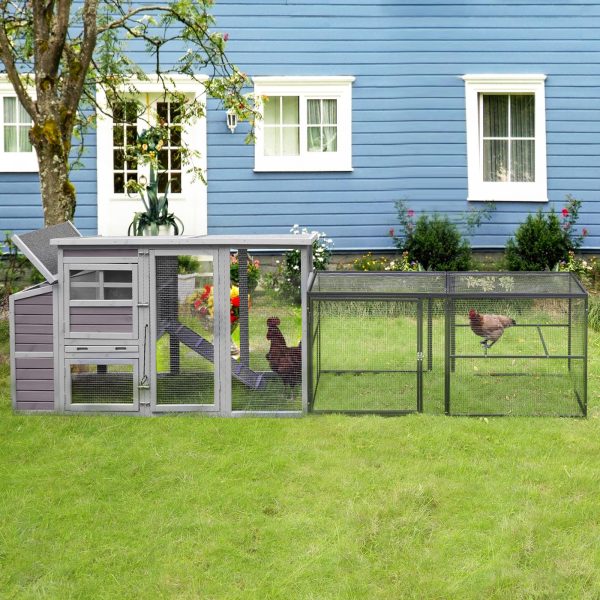
These chicken runs come ready-to-assemble, and are a great option for first-time chicken keepers or those who don’t have the time or skill to build a custom run.
- Pros: Convenient, affordable, minimal effort needed for setup
- Cons: Limited customization options, less durable
The run in the picture is the Avituvin 71 Inch Prefab Chicken Run.
Portable Chicken Runs
More commonly known as “chicken tractors,” these chicken runs are designed to be moved from one spot to another easily.
- Pros: Fresh grazing area for chickens, fertilizes your garden, keeps chickens entertained
- Cons: Not suitable for larger flocks, requires regular movement to prevent overuse of one area
The run in the picture is the Omlet Chicken Coop with Run.
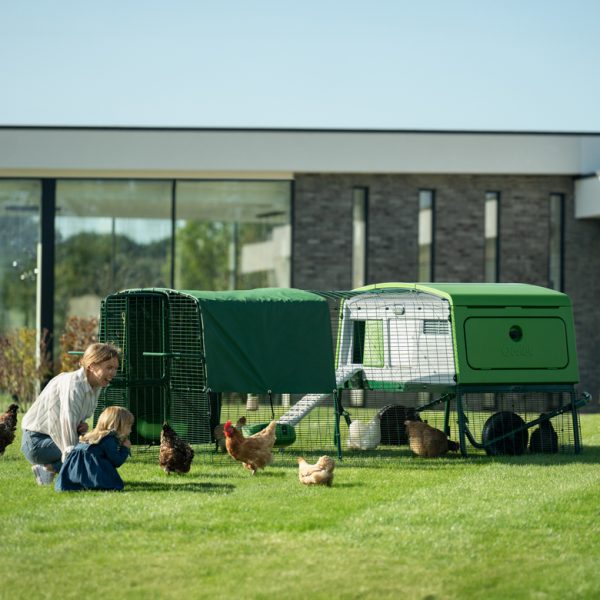
Entertaining Your Chickens in the Run
Chickens love to scratch and peck on their own. But if their run is too barren and lifeless, it defeats the purpose.
Making the chicken run engaging is a necessity to avoid unwanted behaviors like feather pecking or escape attempts.
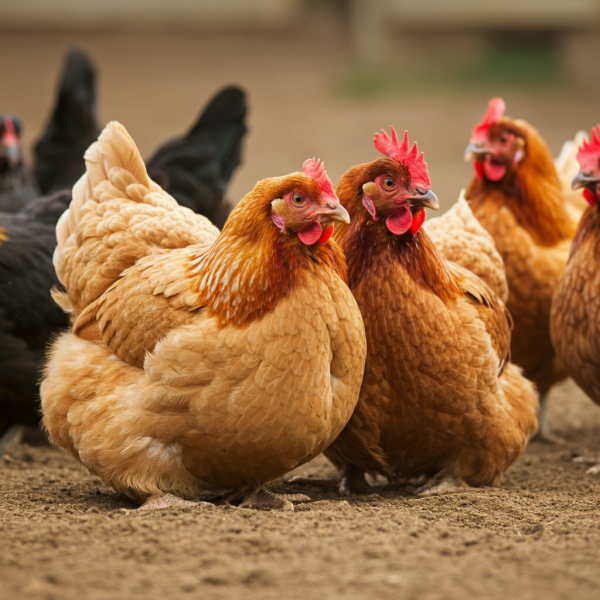
Here are some creative ways to keep your chickens busy in the run:
- Create a designated scratching zone by piling leaves, straw, or sand in one area. Hide treats like sunflower seeds or dried mealworms within the pile to make it more exciting.
- Hang a cabbage, carrot, or apple from a string at head height. Chickens enjoy pecking at the hanging food and working for it.
- Add a few horizontal perches at varying heights using tree branches, wooden planks, or purpose-built roosting bars to create a more dynamic space.
- Fill a corner of the chicken run with dirt, sand, and wood ash and let your chickens enjoy a dust bath. Just be sure to avoid using red sand, as it can stain your chickens’ feathers. Instead, opt for play sand and add some Diatomaceous Earth to the mix to help control red mites and other parasites.
- Mix up the flooring in the run with grass, gravel, or wood chips, adding small obstacles like logs, ramps, or a small hill for them to navigate.
A little effort and creativity can provide your chickens with a stimulating environment that encourages natural behaviors and keeps them active and content.
Final Thoughts
A chicken run isn’t a cage, it’s your flock’s playground.
Create a space where they can scratch, sunbathe, and express their chicken-y selves. Make sure that it’s easy for you to access as well, since you will be in it often too!
